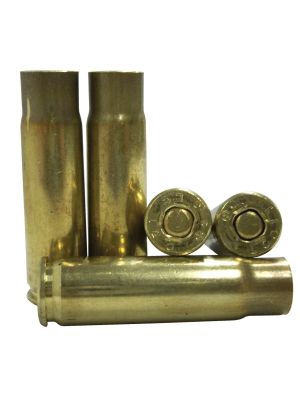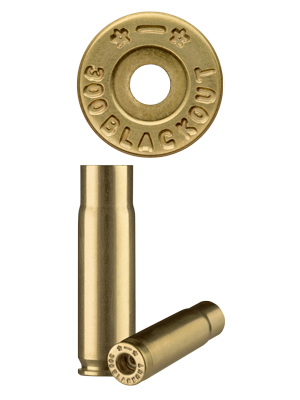.300 AAC Blackout
New & Once Fired .300 Blackout Brass For Sale
The .300 Blackout is a popular round for many rifle shooters. It is an effective round for both short and long range shooting, and its versatility makes it a great choice for hunting and target shooting alike. For those looking to reload their own ammunition, once fired .300 Blackout brass for sale is the perfect option.
Once fired brass is brass that has been used in a firearm before, but has not been damaged or otherwise compromised. This type of brass can be reused multiple times without any issues, making it an economical choice for those who are looking to save money on their ammunition costs. The .300 AAC Blackout brass is especially well-suited to reloading because of its durability and strength. It can withstand repeated firings without becoming deformed or weakened, so you can be sure that your rounds will always perform as expected.
When reloading with once fired .300 AAC Blackout brass, it's important to make sure that the cases are properly cleaned and inspected before they are loaded with new components. This will ensure that the cases are free from dirt and debris, which could cause problems when firing the rounds. It's also important to check the primer pockets for signs of wear or damage before loading them with new primers. Once all of these steps have been completed, you can then begin loading your rounds with powder, projectiles, and primers of your choice.
When using once fired .300 Blackout brass for reloading purposes, it's important to remember that this type of brass requires more attention than other types of brass when being handled during the reloading process. This is due to its thicker walls which require more force when resizing them after each firing cycle. Additionally, this type of brass may require more frequent trimming than other types due to its thicker walls which may cause it to stretch over time if not trimmed regularly.
Overall, once fired .300 Blackout brass is an excellent option for those who are looking to save money on their ammunition costs while still having access to quality components for their reloads. With proper care and maintenance during the reloading process, this type of brass can provide reliable performance shot after shot without any issues or concerns about its durability or strength over time.
- Lake City .300 AAC Blackout Brass - 500 Pieceswas $129.00 Special Price $99.00
- Starline .300 AAC Blackout Brass - 100 Pieceswas $33.99 Special Price $29.99



